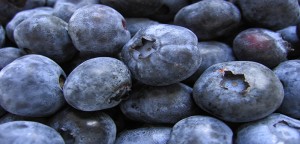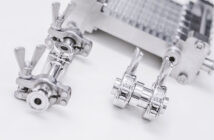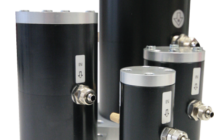
Blueberries can help with mental acuity, Metabolic Syndrome, gut health and muscle repair.
But to make the best quality juice, a processor needs to ensure key chemicals in the whole fruit are retained. A Massey University student has developed a tool to help local processors keep the health-promoting qualities of whole blueberries when they make juice.
[OPEN]Khairul Kasim spent three years as part of her doctorate degree researching blueberry juicing, using pilot plant equipment at Massey University.
A review of literature about blueberry health effects led Kasim to select three sets of chemicals to look at: anthocyanins, chlorogenic acid and procyanidin-B. She investigated the physical and chemical processes that occur during typical processing stages, worked out what was happening to the berries as a result and then tested her calculations against samples of real juice she had made.
The result is a computer model that shows the relationship between how the blueberries are treated during processing and the resulting levels of three types of chemicals in the juice end-product.
Massey University Professor of Postharvest Technology Julian Heyes, who supervised her work, says the Food Pilot Plant was key as it provided a range of small-scale versions of commercial equipment that can be used to make 50 litres of a juice at a time for testing.
He says the findings of the research gives processors a way of assessing how to get a particular result before they start working with the fruit. “They can dial up a processing recipe,” Professor Heyes says. “You type in the temperature and the time for each stage and it will tell you how much of each of these three chemicals is left in the juice at the end.”
“There might be stages where a certain temperature or time favours one chemical more than the other. Some are more stable in heat, for example, and some can be broken down by an enzyme that might be released during processing. These can significantly change the composition of the resulting juice, we’ve found. The processor needs to decide what they want.”
According to Professor Heyes, the payoff can also be substantial “Blueberry juice is a high-value product – it sells at about $20 a litre. There are great opportunities to sell it to the growing middle class, for example in the South East Asian region. They are health-conscious and have enough income to be able to pay for good products.”
Her co-supervisor from Plant and Food Research, Roger Hurst, put her in touch with Blueberries New Zealand as the industry umbrella group. Ms Kasim particularly appreciated working with Mamaku Blue from Rotorua, “who have been a fantastic partner through this – they were very enthusiastic,” Professor Heyes says.
He says there is still some development to do, as currently it is an empirical model. “The next step is to do more process modelling. For example the model might say to heat the blueberries in a short time period but how do you do that with 500kg of berries? So, it’s not quite ready for industry to use now, but this is good progress towards giving them a tool.”
Image courtesy of Jeff Kubina




























































































